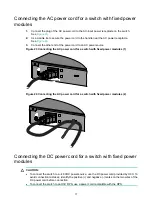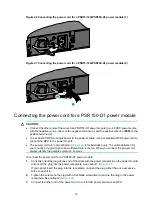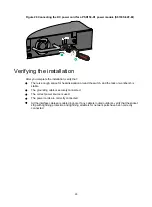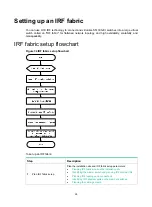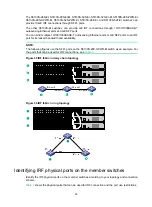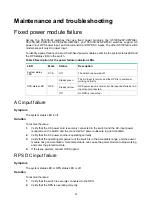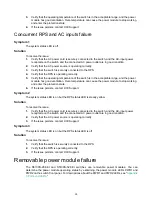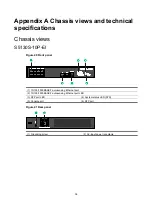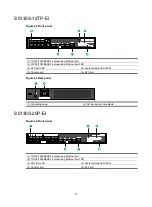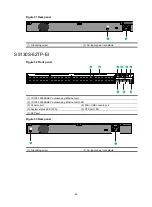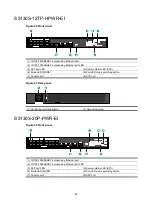
29
Table 7 IRF physical ports and use restrictions
Chassis
Candidate IRF physical ports
Use restrictions
S5130S-28S-EI
S5130S-28S-EI-M
S5130S-28S-PWR-EI
S5130S-28S-HPWR-EI
S5130S-28F-EI
Four SFP+ ports on the front panel
The ports must operate at 10 Gbps.
S5130S-52S-EI
S5130S-52S-EI-M
S5130S-52S-PWR-EI
S5130S-52F-EI
The four SFP+ ports are divided into
two groups: ports 49 and 50 in one
group and ports 51 and 52 in the other
group.
To bind multiple SFP+ ports to an IRF
port, make sure the ports are in the
same group. SFP+ ports in one group
can be bound to different IRF ports.
The ports must operate at 10 Gbps.
S5130S-52P-EI
S5130S-52P-EI-M
S5130S-52TP-EI
S5130S-52P-PWR-EI
All the 10/100/1000BASE-T
autosensing Ethernet ports and SFP
ports on the front panel
The 52 GE ports are divided into two
groups: ports 1 to 24, port 51, and port
52 in one group and ports 25 to 50 in
the other group.
To bind multiple GE ports to an IRF
port, make sure the ports are in the
same group. GE ports in one group
can be bound to different IRF ports.
Other S5130S-EI switches
The ports must operate at 1 Gbps.
Planning the cabling scheme
Use the following cables to connect the IRF physical ports on the switches:
•
Category 5 or above twisted-pair cable
—10/100/1000BASE-T autosensing Ethernet ports.
•
GE SFP transceiver modules and optical fiber or SFP cable
—SFP ports. For the available
models, see "
•
SFP+ transceiver modules and optical fiber or SFP+ cable
—SFP+ ports. For the available
models, see "
If the IRF member switches are far away from one another, use SFP/SFP+ transceiver modules and
optical fibers. If the IRF member switches are all in one equipment room, use twisted pair cables or
SFP/SFP+ cables.
As a best practice, use ring topology to connect the switches. The following describes cabling
schemes in ring topology.
Connecting the IRF member switches in one rack
Use SFP cables to connect the IRF member switches in a rack as shown in
. The switches
in the ring topology (see
) are in the same order as connected in the rack.



